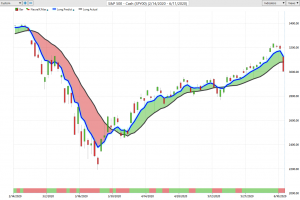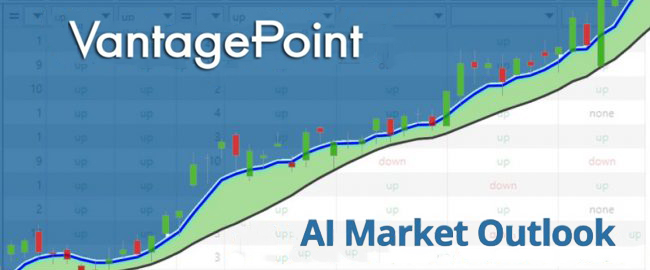Moral Hazard: The Sequel – 2020
Danny Moses: The ratings agencies, the banks, the government, they’re all asleep at the wheel?
Jared Vennett: No one’s paying attention.
– The Big Short
After the Russian Revolution occurred in 1917, the leading political figures in Russia solicited feedback and analysis on Capitalist economies from their top statistician and economist, Nikolai Kondratieff.
Kondratieff studied all the cycles and statistics that were available on the American economy before delivering his presentation to the Russian leaders. His conclusion only delivered part of what the Russian leaders wanted to hear. Kondratieff concluded that Capitalist economies implode and self-destruct every 40 to 60 years. But he further reiterated that after the implosion, the Capitalist economy surged and became much stronger and more efficient as the failures allowed market participants to learn and understand what “worked” and what did not. This perspective was not welcomed in Kondratieff’s Russia. His views were contrary to what communist officials were promoting, especially Josef Stalin, because they suggested that Capitalist nations were not on an inevitable path to destruction but, rather, on an endless quest for efficiency. As a result, Kondratieff was sent to a concentration camp in Siberia and was shot by a firing squad in 1938. Yet in the West, many economists recognize the brilliant, groundbreaking insight that Kondratieff offered.
In a nutshell, Kondratieff postulated that the losing side of the accounting ledger is what all business and economies learn from. As businesses strive to perfect “what works” the path towards that destination is filled with detours of things which clearly do not work. It is these inefficiencies that when allowed to fail, permit a market economy to flourish. But when these inefficiencies persist, they weigh down the functioning of the entire economy.
However, in our popular culture this apparent indifference to “failure” is what often gives critics of capitalism the fuel to attack market-based economies as heartless.
The term moral hazard describes the lack of incentive to guard against risk where one is protected from its consequences. This can be easily understood through a simple insurance contract. Let’s say that you own a house that is worth $200,000. But as an insurer I allow you to insure your property for $400,000. The problem with this transaction is that it creates a moral hazard. You as the homeowner could easily look at torching your home as a life improvement opportunity because the insurance you have acquired benefits you to a larger degree if your house is destroyed.
A similar moral hazard exists in the life insurance market and has been perpetrated by criminals in organized crime. What insurers have discovered is that the underworld will often find homeless people on skid row and take them in for a short period of time. Then, they take out a hefty life insurance policy on this fortunate soul, listing themselves as primary beneficiary. Naturally, to collect the insurance proceeds the “insured” must die a mysterious and unexpected death, which has been conveniently arranged.
I think it is fairly safe to say, that today, the Federal Reserve is creating these same identical moral hazards in the financial markets by saving inefficient companies who have made very poor financial decisions. But the problem is even greater as we look ahead. How does a rating agency like Standard and Poors or Moody’s evaluate the credit worthiness of a corporation, city or state when they are looking to issue a bond, if the Federal Reserve has set the precedent that they will come in and save the day regardless of the consequences?
This risk practically guarantees that the volatility of the last twenty years will only be exacerbated in the future.
The two main forces behind market driven economies are that people desire to make money by making good decisions, and people do not like to lose money which forces people to behave prudently.
Like it or not, this is pretty much how all civilized economies operate. These are the rules and guidelines: you make money if you do a good job, and you lose money if you do a bad job. However, since the 2008 Financial Crisis it is very clear to all market participants that not all players need to abide by these rules.
If we look at the 2008 Financial Crisis, Lehman Brothers was allowed to fail, but because of the mantra of “too big to fail,” insurer AIG and auto manufacturer, General Motors ended up being rescued by the American taxpaper.
The dilemma with bailouts is that if you award, instead of punish, those who made bad decisions, aren’t you setting a very dangerous precedent for the future? Why should someone work diligently to make good decisions if bad decisions are equally rewarded?
Those same banks which recklessly gave out loans were rescued, and even paid themselves huge bonuses after they were rescued. And the government by rescuing them ensured that these practices would re-occur in the future.
Fast forward to 2020 and the Federal Reserve is making “whole” the entire corporate junk bond market which otherwise would be completely insolvent.
Failure in life is necessary for real learning and progress to occur. It is ironic that Nikolai Kondratieff first observed this in Soviet Russia and today our most powerful bureacrats at the Federal Reserve will not let inefficiency fail, and allow the marketplace to absorb and learn what does not work.
There are long term consequences when market participants no longer fear LOSS and poor behavior is rewarded.
Over the past several months what the Federal Reserve has demonstrated without question is that there is absolutely no downside in the corporate debt market. This is precarious to say the least.
Consider the following:
• QE has added 22 trillion dollars of debt or grown by 928% over the last 33 years. However, GDP has only increased by 124% during this same time frame. This indicates that DEBT is piling up 700% faster than real growth and that is a recipe for tremendous volatility across all financial assets!
• Today 21% of Americans rely on welfare.
• The Congressional Budget Office projects that the 2nd Quarter GDP will drop over 38%! This is a record!
• One third of American tenants have stopped paying their rent due to the economic lockdown.
• In May 2020, 8.8% of all mortgages are in forbearance. This means that they are not making payments but have been granted a temporary exemption by banks from doing so. If you watched the movie the “Big Short” you will remember that the magic number which created the 2008 Financial Crisis was 4% of mortgages not making their payments. This forbearance is believed to continue till September 2020.
• 4.7 million Americans cannot pay their mortgages right now. That is 1.5 million more than during the peak of the Great Financial Crisis in 2009.
• Almost 40 million Americans are out of work since early March. This is larger than the entire population of Canada.
When I look at these realities, I clearly see headwinds ahead. Furthermore, income inequality in America has worsened in the past decade. This has occurred primarily because those with access to capital have chased the Fed’s Multiple Bubbles for their immediate benefit. Low interest rates and quantitative easing programs help the ultra-wealthy because they artificially boost asset values, especially for riskier investments. The ultra-wealthy can take advantage of record highs in the stock market while the asset-poor working class cannot. The poor must persist dealing with inflation and currency debasement on relatively stagnant hourly wages.
Nobel Laureate, Milton Friedman once commented that there is nothing as permanent as a temporary government program. This is worth thinking about as we move forward because phasing out these bailout programs is almost impossible. In 2013, Fed Chairman Ben Bernanke first talked about ending Quantitative Easing and the markets responded with sharp selloffs and more monetary stimulus. Any whisper of the Fed cutting back or eliminating Quantitative Easing is always met by the financial markets selling off sharply and the Fed coming to the rescue.
Corporate America, and the financial markets as a whole, have become addicted to the Fed providing support. Over the last 12 years we have gone from Quantitative Easing 1 to Quantitative Infinity to Modern Monetary Theory. The moral hazard this creates is that historically, the rating a BOND receives is the probability of default. If inefficient bad Bonds will always be supported by the Federal Reserve, as they are today, why should the top players try to be efficient? How does the marketplace asses and define risk?
Traditionally market-based economies function based upon savings and a cost of capital. Neither of these elements exist today. It clearly appears that almost everything is too big to fail.
I want to stress that this is my fundamental opinion about the markets and the world at large at the present time.
Everything that I have mentioned is a “SHOULD.” And the word “SHOULD is the most expensive word in a traders vocabulary.
Instead traders need to understand what “IS” happening and mimic that!
How?
The only way that I know how to do that is with artificial intelligence, neural networks and machine learning.
Consider the news headlines for the last few months….
40 million Unemployed!
Coronavirus Spikes in New York City!
Corporate Earnings Crashes!
Political Turmoil in Congress.
Social Unrest and Riots Throughout America.
Etc.
With artificial intelligence and machine learning, all of these issues are almost insignificant.
Look at the following chart now of the S&P 500 Index over the last few months and ask yourself if you could’ve made some profits for yourself based upon the artificial intelligence forecasts on the chart?

Do you see where you could have made money here?
To paraphrase the great trader Jesse Livermore who had legendary earnings in the early 1900’s:
“I believe there are no good stocks or bad stocks; there are only money-making stocks. So, there is no good direction to trade, short or long; there is only the moneymaking way to trade.”
There is only one fact in the world of markets and that is PRICE. What the price of a stock does is the only thing that matters to a trader. It’s is the only thing that can create wealth. As experienced traders have learned, the market is never wrong, but opinions often are!
The job of A.I. is to find those stocks with the best trends, either Up or Down and highlight where the risk lies in that market.
Bad Traders Obsess on the SHOULD. Every other word out of their mouths’ is SHOULD.
I can’t recall how many times a trader has told me all the reasons why his portfolio is heavily invested in a stock because of a great story, in spite of the stock being in a firm downtrend.
But, when “SHOULD” and “IS” meet some pretty explosive things can happen. And that is exactly where we want to be as traders!
Trading or investing whether on margin or otherwise carries a high level of risk, and may not be suitable for all persons. Leverage can work against you as well as for you. Before deciding to trade or invest you should carefully consider your investment objectives, level of experience, and ability to tolerate risk. The possibility exists that you could sustain a loss of some or all of your initial investment or even more than your initial investment and therefore you should not invest money that you cannot afford to lose. You should be aware of all the risks associated with trading and investing, and seek advice from an independent financial advisor if you have any doubts. Past performance is not necessarily indicative of future results.
Intrigued?
Visit with us and check out the a.i. at our Next Live Training.
Discover why artificial intelligence is the solution professional traders go-to for less risk, more rewards, and guaranteed peace of mind.
It’s not magic. It’s machine learning.
Make it count.









